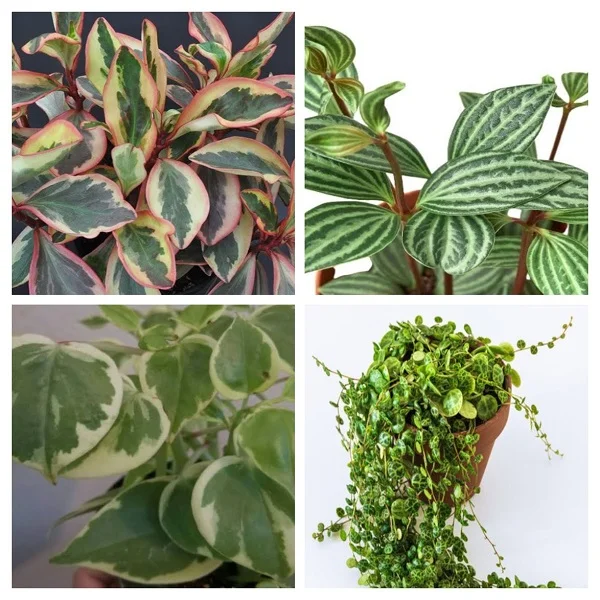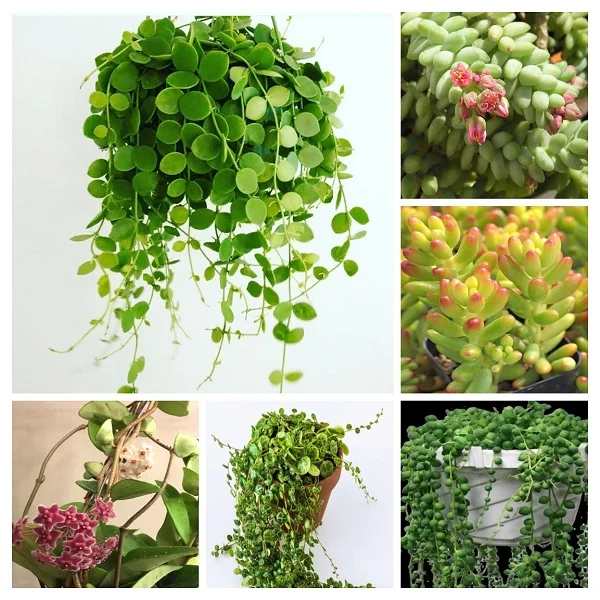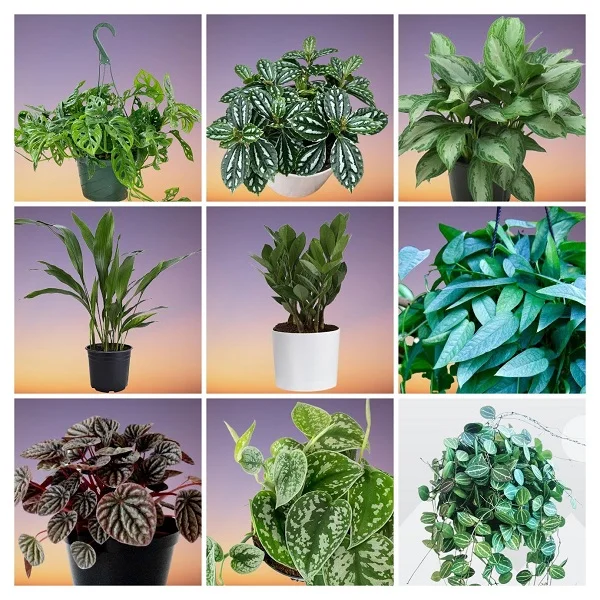Coin-leaf Peperomia (Peperomia polybotrya) Indoor Care and Propagation Guide
Some links in this post may be affiliate links
Coin-leaf Peperomia (Peperomia polybotrya) prospers in medium to bright light, moderately warm and humid conditions, and moderately moist, rich, well-drained soil coupled with monthly feeding in the growing season.
Peperomia polybotrya also called Raindrop Peperomia or Coin Plant is one of the popular Peperomia varieties and bears glossy, dark-green, heart-shaped leaves with pale green undersides.
The stems in Raindrop Peperomia are short and sturdy. The flowers are rat-tail like and they offer a pleasant smell.
Raindrop Peperomia is a succulent, compact plant which resembles Pilea peperomioides (Chinese Money Plant) though the plants are quite different in the shape of the leaves. Where the leaves in the former are more pointed and heart-shaped while in the latter they are rounded.

Botanical name: Peperomia polybotrya
Family: Piperaceae
Common names: Coin-leaf Peperomia, Raindrop Peperomia, Coin Plant
Origin
Peperomia polybotrya is native to South America’s tropical regions, which include parts of Peru and Colombia.
Size
Raindrop Peperomia grows to a height of about 1 foot which places it among the best plants for the limited spaces in the home, office and other places.
Is Coin-leaf Peperomia toxic?
Peperomia polybotrya like other Peperomia Plants is non-toxic to humans and pets. They are some of pet-friendly plants perfect for growing in the home.
Where to Buy
If you would like to acquire Coin-leaf Peperomia for your plant collection, they are available online on Amazon (Link to Amazon).
Peperomia polybotrya Care Indoors
Coin-leaf Peperomia (Peperomia polybotrya) blossoms in medium to bright light, moderate warmth of 15-260C, average humidity of 50-55% and moderately moist, rich, well-drained, succulents potting mix coupled with monthly feeding during the growing season.
Peperomia polybotrya requires regular pruning to keep it neat, minimize pest and disease infestations as well as encourage a bushy growth. Repotting is only needed when the plant becomes extremely pot-bound. Keep reading for more details on these growing conditions and how to achieve them.
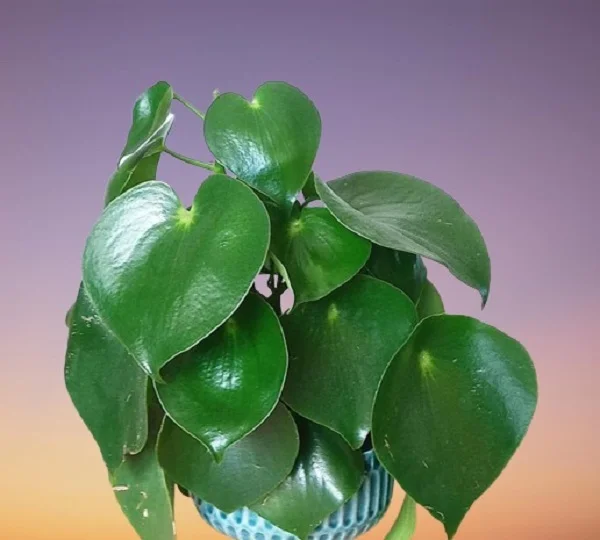
Watering
Water Coin-leaf Peperomia liberally during the growing season and allow the top 2-3 inches of soil to dry out between waterings to maintain the soil moderately moist.
Decrease watering during the cold season to keep the soil barely moist as growth is minimal at this time but do not allow the soil to dry out completely.
Ensure the pot has a drainage hole to prevent the soil from getting soggy as it can lead to root-rot and eventual loss of the plant. Read more on how to water indoor plants the correct way.
Light Requirements
Coin-leaf Peperomia grows best in medium to bright indirect light (filtered light). Keep it away from direct sunlight to avoid scorching the leaves.
Too little light will result in leggy plants and loss of leaf color. Where the natural light is not adequate you may grow the plant under a grow light. Take a look at these full spectrum grow lights on Amazon.
Regularly turn the pot to ascertain that the plant receives light on all sides for uniform growth and also prevent leggy growth.
Temperature and Humidity
Average warmth of 15-260C is ideal for Coin-leaf Peperomia. Keep it away from cold drafts as they can cause leaf drop.
Coin-leaf Peperomia has no need for extra humidity. Average room humidity of 50-55% is adequate for this plant. Clean the leaves frequently by damp-wiping with a soft cloth to get rid of dust and also discourage pest and disease infestations. Ensure that there is good air circulation to minimize fungal diseases.
Fertilizer
Feed Coin-leaf Peperomia with a balanced, liquid fertilizer every 4 weeks during the growing period. Stop feeding in the cold season as growth is minimal and feeding at this time may lead to fertilizer burn and loss of the plant.
Potting Mix
The best potting mix for Coin-leaf Peperomia should be rich in organic matter, loose and free-draining to avoid getting soggy soil. The soil should be loose enough to allow water to drain out fast enough.
Raindrop Peperomia is prone to root-rot if the soil gets soggy (retains too much water), therefore, cactus and succulents soil is ideal as it drains easily.
Repotting
Repot Coin-leaf Peperomia Plant during the growing season only when the plant has become extremely pot-bound as it grows best when slightly pot-bound.
Use a pot one size larger than the current one. Ensure that the pot has a drainage hole to prevent the soil from getting soggy as it can result in root-rot. A terracotta is preferable for this plant as it is porous and allows water to drain faster. This prevents the soil from holding too much water. Check out these terracotta pots on Amazon.
Pruning
Pruning Coin-leaf Peperomia involves regular removal of dead foliage to maintain the plant neat as well as reduce pest and disease infestations.
To encourage a bushy, compact growth, regularly pinch off the growing tips. As the plant ages, it becomes straggly therefore, cutback the stems during the growing season to rejuvenate growth.
Propagation
Coin-leaf Peperomia (Peperomia polybotrya) propagation can be done in 2 ways; from leaf cuttings or by plant division.
1. How to propagate Coin-leaf Peperomia from leaf cuttings in water
The leaf cuttings root easily, therefore there is no need for a rooting hormone. Take leaf cuttings from a healthy Coin-leaf Peperomia and ensure each leaf cutting has a petiole.
Allow some time for the formation of a protective callus tissue over the cuts of the leaf cuttings to prevent rotting.
Once callused, place the leaf cuttings in a jar of clean plain water or in a propagation station and change the water every 5-7 days.
Place in warm, well-lit place until growth begins at the base of the cuttings leaf petiole. Allow enough time for substantial growth of the roots and new leaves.
Transfer the rooted cuttings to individual pots in moist, free-draining soil. For a fuller plant, transfer several cuttings in one pot.
Place the pots in a warm, well-lit place. Maintain the soil moist until the new Peperomia polybotrya plants are well established after which you can begin routine care.
2. How to propagate Coin-leaf Peperomia by plant division
Water the Coin-leaf Peperomia thoroughly at least 1 day before to make it easier to divide and also hasten establishment. A well hydrated plant suffers less shock and takes a shorter time to take root.
Take the plant out of its pot and carefully divide it into sections by pulling apart the roots. Ensure each section has adequate roots to hasten establishment.
Select a 6 or 8 in. pot and ensure that the pot has a drainage hole to prevent the soil from getting soggy as it can lead to rotting.
Fill the pot with free-draining soil and make a hole in the center of the pot. Ensure that the hole is slightly wider than the root base of the section.
Place the section in the previously made hole and lightly firm the soil around the base while taking care not to bury it too deep; maintain the section at the same soil level it was in the previous pot.
Water the soil thoroughly and place the set up in a warm, well-lit place. Maintain the soil moist until the new Peperomia polybotrya plant is well established after which you can begin routine care.
Related: How to Propagate Radiator Plants (4 Easy Methods of Peperomia Propagation)
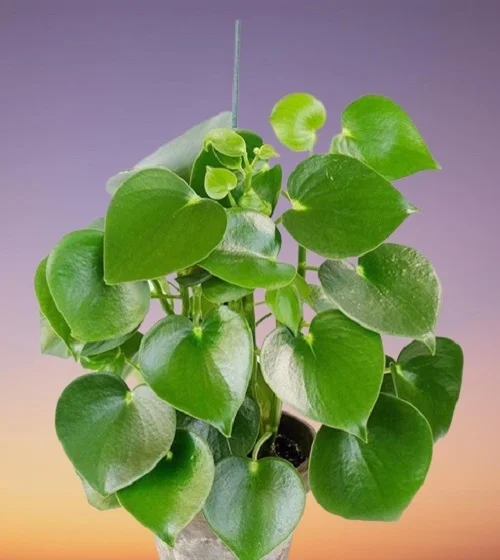
Peperomia polybotrya Problems
Coin-leaf Peperomia (Peperomia polybotrya) problems include brown leaf tips, dropping leaves, drooping leaves, shriveled leaves, wilting, leggy stems, diseases and pests among others. Keep reading for more on these problems and how to fix them.
Dropping leaves
Dropping leaves (leaf fall) in Coin-leaf Peperomia is caused by many and varied reasons like overwatering, insufficient lighting, overfeeding among others.
Here is an outline on 12 reasons why Peperomia is dropping leaves with solutions
Drooping leaves
Coin-leaf Peperomia leaves may wilt and begin to droop due to a number of reasons like underwatering, humidity issues, quality of soil among others.
Check out this post on 14 reasons for Peperomia drooping leaves and how to fix them
Pests
Coin-leaf Peperomia is prone to mealybugs, whiteflies, scale insects and spider mites. Isolate the affected plant to prevent spread to other plants. Treat it with neem oil or insecticidal soap as per the manufacturer's instructions.
Diseases
Coin-leaf Peperomia is prone to leaf spot disease. Isolate the affected plant and treat it appropriately for the leaf spot disease.
Wilted and discolored leaves and corky swellings under the leaves
Soggy soil for your Coin-leaf Peperomia is the cause of wilted and discolored leaves and corky swellings under the leaves. This is an indication of root-rot. Isolate the affected plant and treat it appropriately for the root-rot.
To prevent the soil from getting soggy in the future, ensure that the pot has a drainage hole and that the soil is loose and free-draining.
Leggy stems
Leggy stems in Coin-leaf Peperomia are due to low light. It grows best in bright light to light shade. Cutback the stems to rejuvenate growth and move the plant to a brighter spot where it will receive medium to bright indirect light or instal grow lights if the natural light is not sufficient. Check out this guide on understanding light for houseplants.
Brown leaf tips and edges
Brown leaf tips and edges in Coin-leaf Peperomia are due to sudden drop in temperature from cold drafts. Remove all the damaged leaves to keep the plant tidy. Keep the plant away from cold window sills, air conditioners, windy doors e.t.c and maintain an average temperature of 15-260C. A room temperature that is comfortable for you is ideal for these plants. Check out this guide on understanding temperature for houseplants.
Dry and shrivelled leaves
Excess soluble salts in the soil from the water or excess feeding will cause dry shrivelled leaves in Coin-leaf Peperomia. Occasionally flush out the salts from the soil by running a stream of water through the soil until it comes out through the drainage holes and repeat the process several times.
You liked it? Share on social media.
Related Content
Amazon Associates Disclosure
Homeplantsguide.com is a participant in the Amazon Services LLC Associates Program, an affiliate advertising program designed to provide a means for sites to earn advertising fees by advertising and linking to amazon.com.



